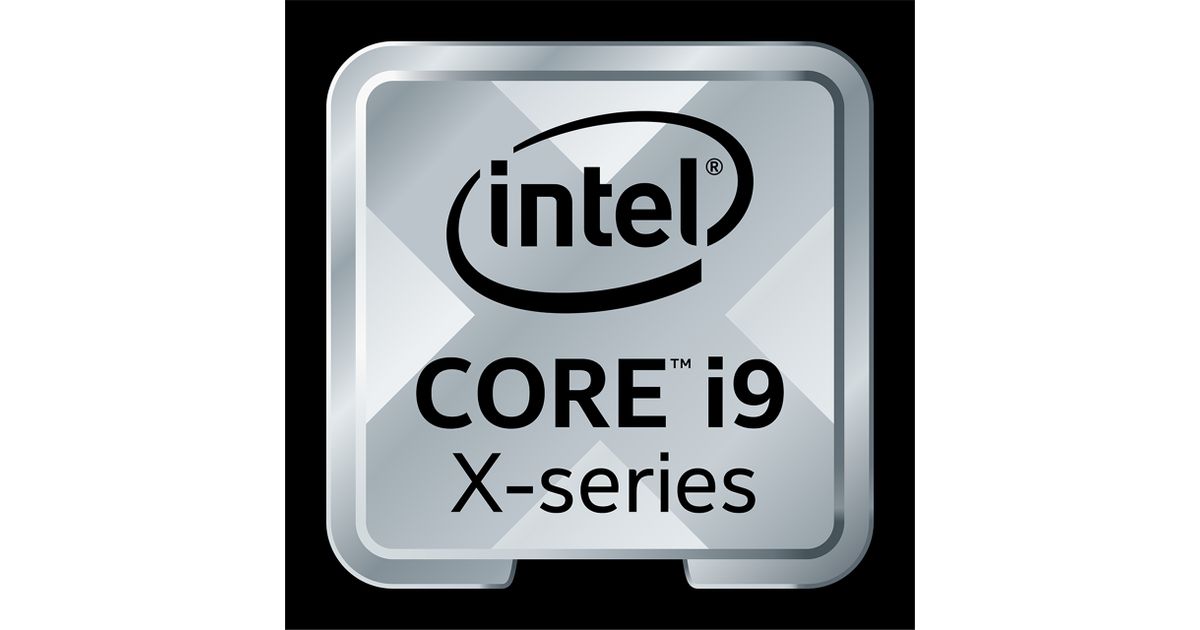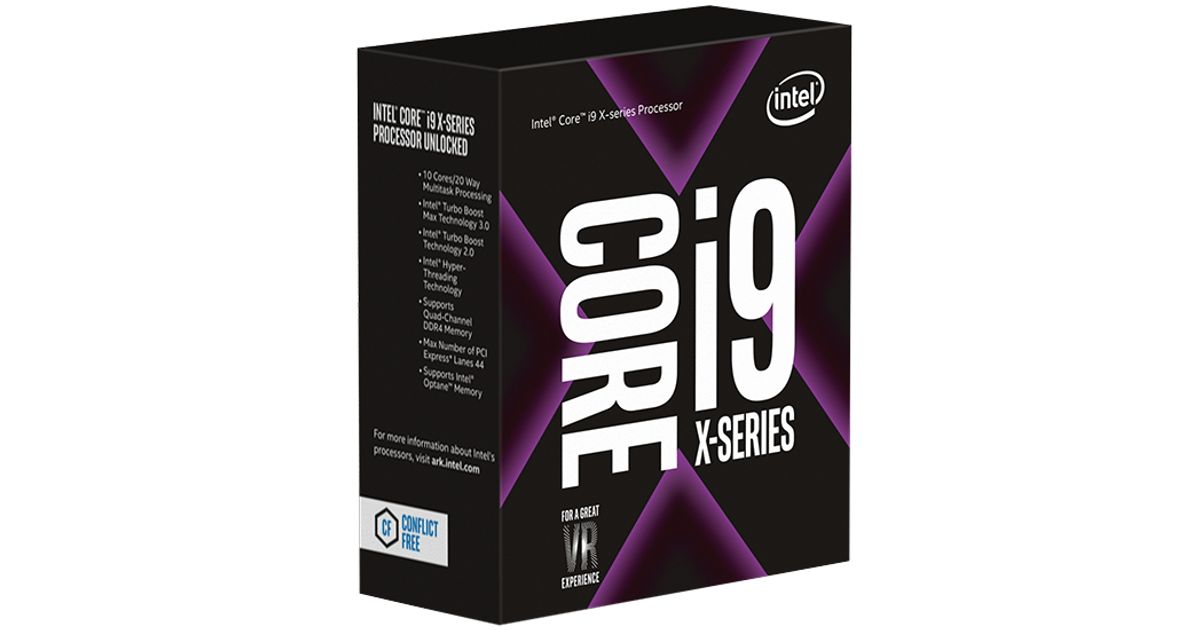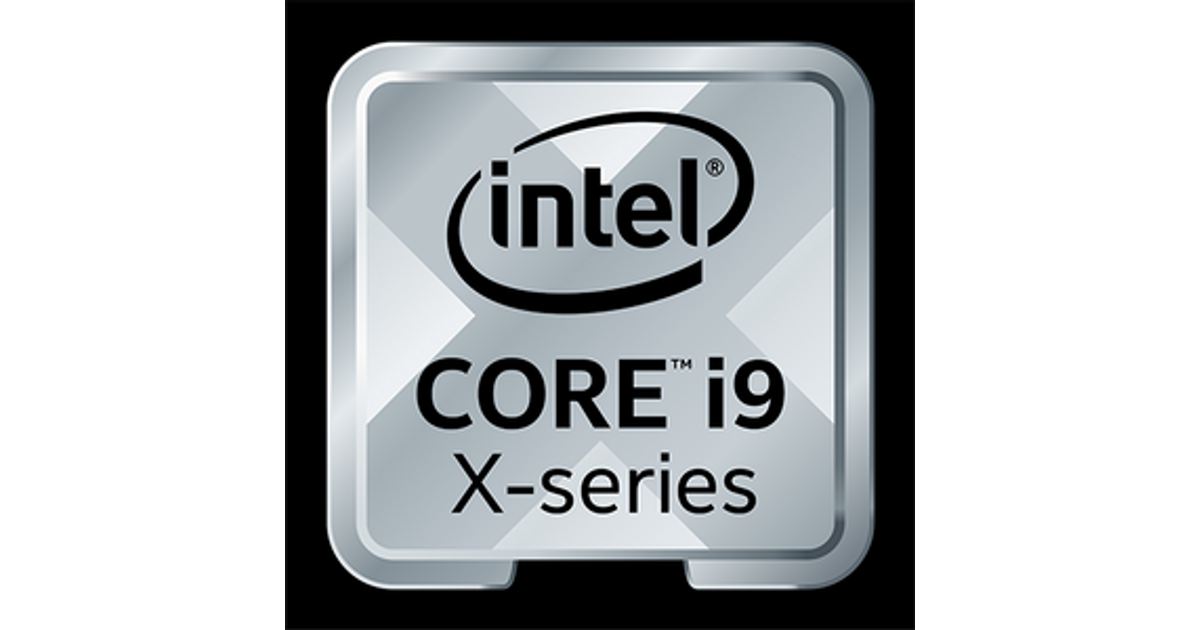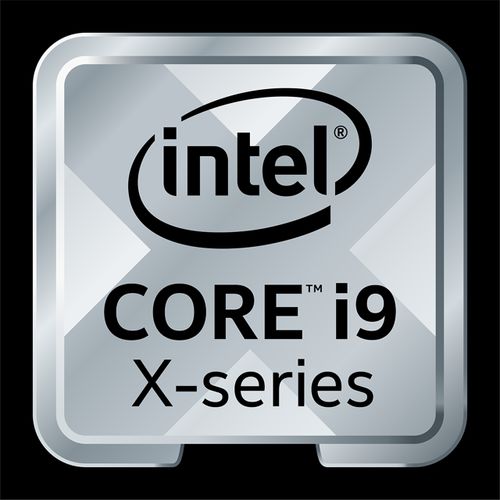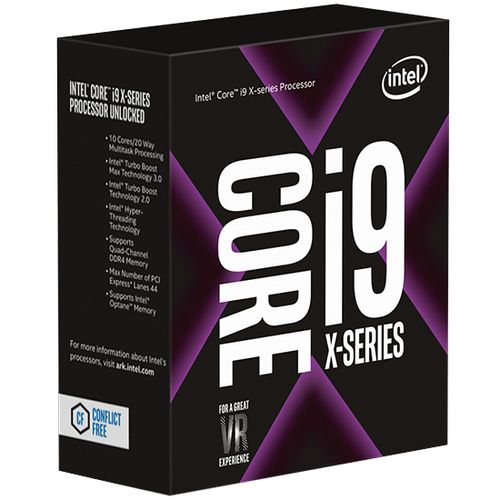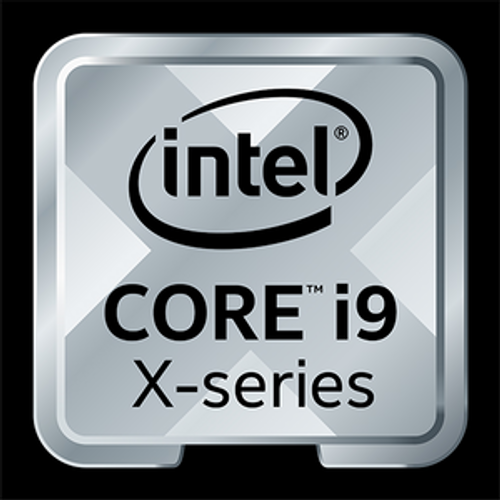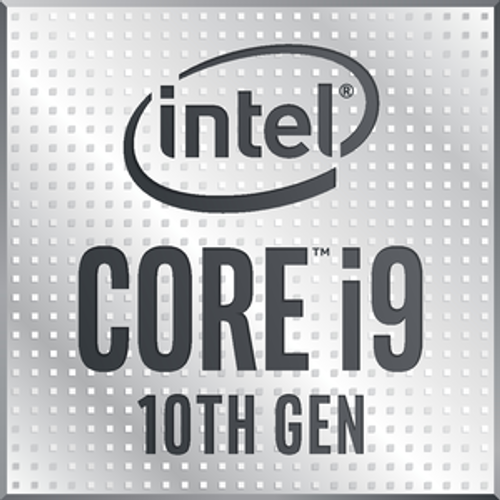For illustrative purpose only
Intel Core i9-10900X processor 3.7 GHz 19.25 MB Smart Cache Box
Intel Core i9-10900X, Intel® Core™ i9 X-series, LGA 2066 (Socket R4), 14 nm, Intel, i9-10900X, 3.7 GHz
Read more...
Read more...
Product Information
| Information | |
|---|---|
| Manufacturer | Intel |
| Product code | 15750755 |
| EAN | 00735858443425 |
| Manufacturer part number | BX8069510900XSRGV7 |
| Category | Processors |
| Processor | |
|---|---|
| Processor family | Intel® Core™ i9 X-series |
| Processor cores | 10 |
| Processor socket | LGA 2066 (Socket R4) |
| Processor lithography | 14 nm |
| Box | Y |
| Cooler included | N |
| Processor manufacturer | Intel |
| Processor model | i9-10900X |
| Processor base frequency | 3.7 GHz |
| Processor operating modes | 64-bit |
| Processor generation | 10th gen Intel® Core™ i9 |
| Processor threads | 20 |
| System bus rate | 8 GT/s |
| Processor boost frequency | 4.5 GHz |
| Processor cache | 19.25 MB |
| Processor cache type | Smart Cache |
| Thermal Design Power (TDP) | 165 W |
| Memory bandwidth supported by processor (max) | 94 GB/s |
| Processor codename | Cascade Lake |
| Maximum internal memory supported by processor | 256 GB |
| Maximum number of PCI Express lanes | 48 |
| PCI Express slots version | 3.0 |
| Tjunction | 94 °C |
| Generation | 10th Generation |
| Design | |
|---|---|
| Component for | PC |
| Product type | Processor |
| Processor special features | |
|---|---|
| Processor ARK ID | 198019 |
| Execute Disable Bit | Y |
| Supported instruction sets | SSE4.1, SSE4.2, AVX 2.0, AVX-512 |
| CPU configuration (max) | 1 |
| Embedded options available | N |
| Thermal solution specification | PCG 2017X |
| Intel® Hyper Threading Technology (Intel® HT Technology) | Y |
| Intel® Turbo Boost Technology | 2.0 |
| Intel® AES New Instructions (Intel® AES-NI) | Y |
| Enhanced Intel SpeedStep Technology | Y |
| Intel® Turbo Boost Max Technology 3.0 frequency | 4.7 GHz |
| Intel 64 | Y |
| Intel Virtualization Technology (VT-x) | Y |
| Intel Virtualization Technology for Directed I/O (VT-d) | Y |
| Intel Turbo Boost Max Technology 3.0 | Y |
| Intel® Optane™ Memory Ready | Y |
| AVX-512 Fused Multiply-Add (FMA) units | 2 |
| Intel® Deep Learning Boost (Intel® DL Boost) | Y |
| Memory | |
|---|---|
| Memory channels | Quad-channel |
| Memory types supported by processor | DDR4-SDRAM |
| Memory clock speeds supported by processor | 2933 MHz |
| ECC | N |
| Supported memory types | DDR4-SDRAM |
| Maximum internal memory | 256 GB |
| Graphics | |
|---|---|
| On-board graphics adapter | N |
| Discrete graphics adapter | N |
| On-board graphics adapter model | Not available |
| Discrete graphics adapter model | Not available |
| Features | |
|---|---|
| Market segment | Desktop |
| Scalability | 1S |
| PCI Express CEM revision | 3.0 |
| Harmonized System (HS) code | 85423119 |
| Performance | |
|---|---|
| Export Control Classification Number (ECCN) | 5A992C |
| Commodity Classification Automated Tracking System (CCATS) | G077159 |
| Packaging data | |
|---|---|
| Package type | Retail box |
| Other features | |
|---|---|
| Target market | Gaming, Content Creation |
| Launch date | Q4'19 |
| Status | Launched |
| Maximum memory | 256 GB |
| Other information | |
|---|---|
| Bus speed | 8 GT/s DMI3 |
Product Description
Intel® Optane™ Memory Supported
Intel® Optane™ memory is a revolutionary new class of non-volatile memory that sits in between system memory and storage to accelerate system performance and responsiveness. When combined with the Intel® Rapid Storage Technology Driver, it seamlessly manages multiple tiers of storage while presenting one virtual drive to the OS, ensuring that data frequently used resides on the fastest tier of storage. Intel® Optane™ memory requires specific hardware and software configuration.
Intel® Turbo Boost Technology
Intel® Turbo Boost Technology dynamically increases the processor's frequency as needed by taking advantage of thermal and power headroom to give you a burst of speed when you need it, and increased energy efficiency when you don’t.
Intel® Hyper-Threading Technology
Intel® Hyper-Threading Technology (Intel® HT Technology) delivers two processing threads per physical core. Highly threaded applications can get more work done in parallel, completing tasks sooner.
Intel® Virtualization Technology (VT-x)
Intel® Virtualization Technology (VT-x) allows one hardware platform to function as multiple “virtual” platforms. It offers improved manageability by limiting downtime and maintaining productivity by isolating computing activities into separate partitions.
Intel® Virtualization Technology for Directed I/O (VT-d)
Intel® Virtualization Technology for Directed I/O (VT-d) continues from the existing support for IA-32 (VT-x) and Itanium® processor (VT-i) virtualization adding new support for I/O-device virtualization. Intel VT-d can help end users improve security and reliability of the systems and also improve performance of I/O devices in virtualized environments.
Intel® 64
Intel® 64 architecture delivers 64-bit computing on server, workstation, desktop and mobile platforms when combined with supporting software.¹ Intel 64 architecture improves performance by allowing systems to address more than 4 GB of both virtual and physical memory.
Instruction Set
An instruction set refers to the basic set of commands and instructions that a microprocessor understands and can carry out. The value shown represents which Intel’s instruction set this processor is compatible with.
Instruction Set Extensions
Instruction Set Extensions are additional instructions which can increase performance when the same operations are performed on multiple data objects. These can include SSE (Streaming SIMD Extensions) and AVX (Advanced Vector Extensions).
# of AVX-512 FMA Units
Intel® Advanced Vector Extensions 512 (AVX-512), new instruction set extensions, delivering ultra-wide (512-bit) vector operations capabilities, with up to 2 FMAs (Fused Multiply Add instructions), to accelerate performance for your most demanding computational tasks.
Enhanced Intel SpeedStep® Technology
Enhanced Intel SpeedStep® Technology is an advanced means of enabling high performance while meeting the power-conservation needs of mobile systems. Conventional Intel SpeedStep® Technology switches both voltage and frequency in tandem between high and low levels in response to processor load. Enhanced Intel SpeedStep® Technology builds upon that architecture using design strategies such as Separation between Voltage and Frequency Changes, and Clock Partitioning and Recovery.
Intel® Deep Learning Boost (Intel® DL Boost)
A new set of embedded processor technologies designed to accelerate AI deep learning use cases. It extends Intel AVX-512 with a new Vector Neural Network Instruction (VNNI) that significantly increases deep learning inference performance over previous generations.
Intel® Optane™ memory is a revolutionary new class of non-volatile memory that sits in between system memory and storage to accelerate system performance and responsiveness. When combined with the Intel® Rapid Storage Technology Driver, it seamlessly manages multiple tiers of storage while presenting one virtual drive to the OS, ensuring that data frequently used resides on the fastest tier of storage. Intel® Optane™ memory requires specific hardware and software configuration.
Intel® Turbo Boost Technology
Intel® Turbo Boost Technology dynamically increases the processor's frequency as needed by taking advantage of thermal and power headroom to give you a burst of speed when you need it, and increased energy efficiency when you don’t.
Intel® Hyper-Threading Technology
Intel® Hyper-Threading Technology (Intel® HT Technology) delivers two processing threads per physical core. Highly threaded applications can get more work done in parallel, completing tasks sooner.
Intel® Virtualization Technology (VT-x)
Intel® Virtualization Technology (VT-x) allows one hardware platform to function as multiple “virtual” platforms. It offers improved manageability by limiting downtime and maintaining productivity by isolating computing activities into separate partitions.
Intel® Virtualization Technology for Directed I/O (VT-d)
Intel® Virtualization Technology for Directed I/O (VT-d) continues from the existing support for IA-32 (VT-x) and Itanium® processor (VT-i) virtualization adding new support for I/O-device virtualization. Intel VT-d can help end users improve security and reliability of the systems and also improve performance of I/O devices in virtualized environments.
Intel® 64
Intel® 64 architecture delivers 64-bit computing on server, workstation, desktop and mobile platforms when combined with supporting software.¹ Intel 64 architecture improves performance by allowing systems to address more than 4 GB of both virtual and physical memory.
Instruction Set
An instruction set refers to the basic set of commands and instructions that a microprocessor understands and can carry out. The value shown represents which Intel’s instruction set this processor is compatible with.
Instruction Set Extensions
Instruction Set Extensions are additional instructions which can increase performance when the same operations are performed on multiple data objects. These can include SSE (Streaming SIMD Extensions) and AVX (Advanced Vector Extensions).
# of AVX-512 FMA Units
Intel® Advanced Vector Extensions 512 (AVX-512), new instruction set extensions, delivering ultra-wide (512-bit) vector operations capabilities, with up to 2 FMAs (Fused Multiply Add instructions), to accelerate performance for your most demanding computational tasks.
Enhanced Intel SpeedStep® Technology
Enhanced Intel SpeedStep® Technology is an advanced means of enabling high performance while meeting the power-conservation needs of mobile systems. Conventional Intel SpeedStep® Technology switches both voltage and frequency in tandem between high and low levels in response to processor load. Enhanced Intel SpeedStep® Technology builds upon that architecture using design strategies such as Separation between Voltage and Frequency Changes, and Clock Partitioning and Recovery.
Intel® Deep Learning Boost (Intel® DL Boost)
A new set of embedded processor technologies designed to accelerate AI deep learning use cases. It extends Intel AVX-512 with a new Vector Neural Network Instruction (VNNI) that significantly increases deep learning inference performance over previous generations.
